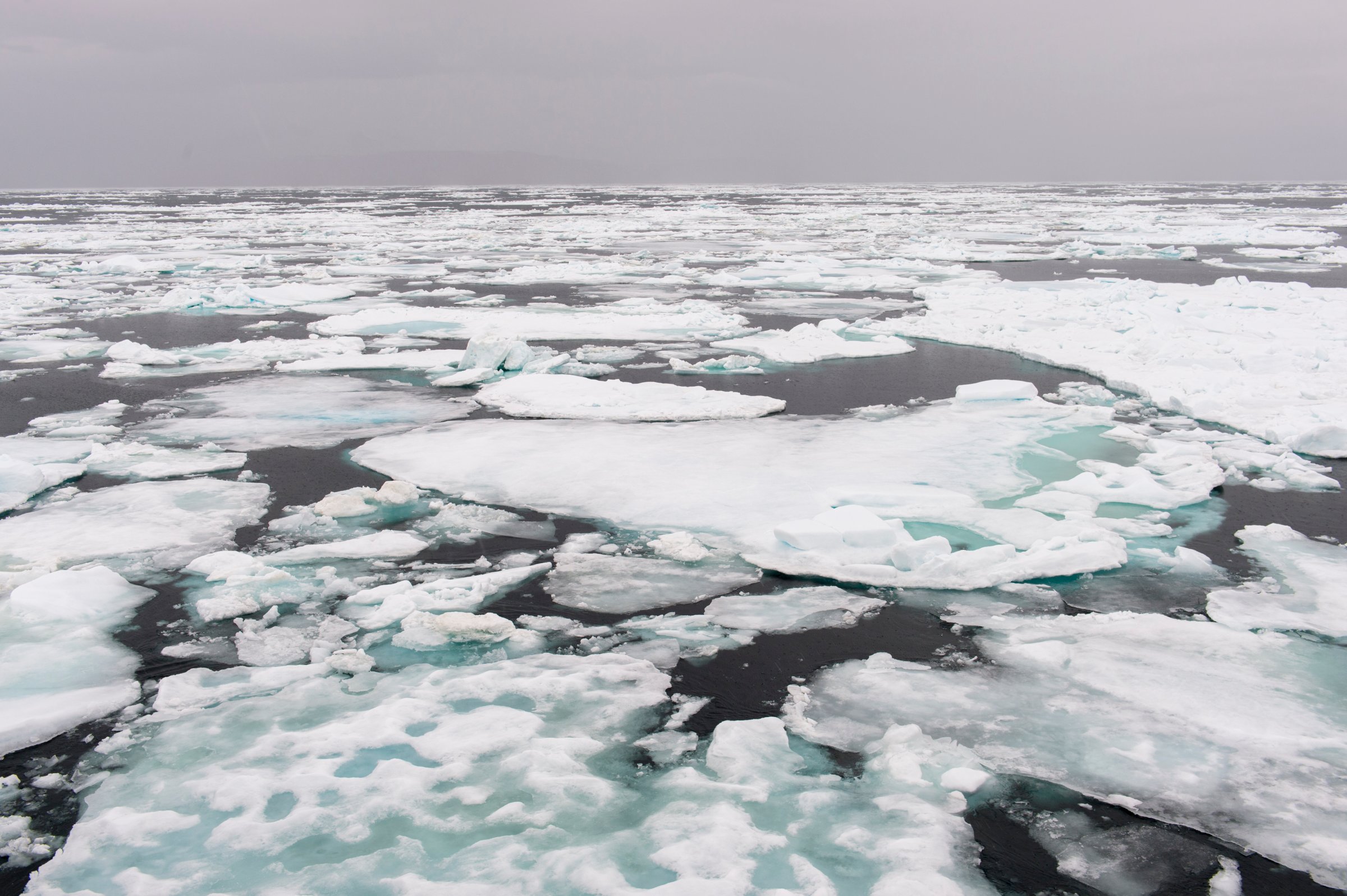
The high point for Arctic sea ice levels hit a record low this winter, sea ice monitors said Wednesday.
Sea ice covered approximately 5.57 million square miles on March 7, nearly 500,000 square miles below the average winter high in recent decades, according to preliminary numbers from the National Snow and Ice Data Center (NSIDC). Arctic sea ice cover fluctuates from season to season. In early March, it typically hits its highest level of coverage before melting again in the spring and summer months.
Scientists attribute the low sea level to an usually warm fall and winter. Temperatures around the globe have spiked in recent years due to man-made climate change, leading to several years of record-breaking heat, and few places have been hit harder than the Arctic. Temperatures over some parts of the Arctic were more than 5°C (9°F) warmer than average between October and February, according to NSIDC.
Read More: It’s Hard to Describe Just How Badly the Arctic Is Doing
The report is the latest in a string of disappointing news about the state of the Arctic. A December report from the National Oceanic and Atmospheric Administration (NOAA) found that the Arctic experienced the lowest snow cover and highest land temperatures on record last year. And sea ice levels also reached a record low last fall.
Scientists studying man-made climate change worry that the situation in the Arctic may bode poorly for the rest of the planet. Countries reached an agreement in 2015 to try to keep temperatures from rising more than 2°C (3.6°F) above pre-industrial levels by 2100, a target scientists say is the level the world must meet to avoid the worst effects of climate change.
More Must-Reads From TIME
- The 100 Most Influential People of 2024
- The Revolution of Yulia Navalnaya
- 6 Compliments That Land Every Time
- Stop Looking for Your Forever Home
- If You're Dating Right Now , You're Brave: Column
- The AI That Could Heal a Divided Internet
- Fallout Is a Brilliant Model for the Future of Video Game Adaptations
- Want Weekly Recs on What to Watch, Read, and More? Sign Up for Worth Your Time
Write to Justin Worland at justin.worland@time.com